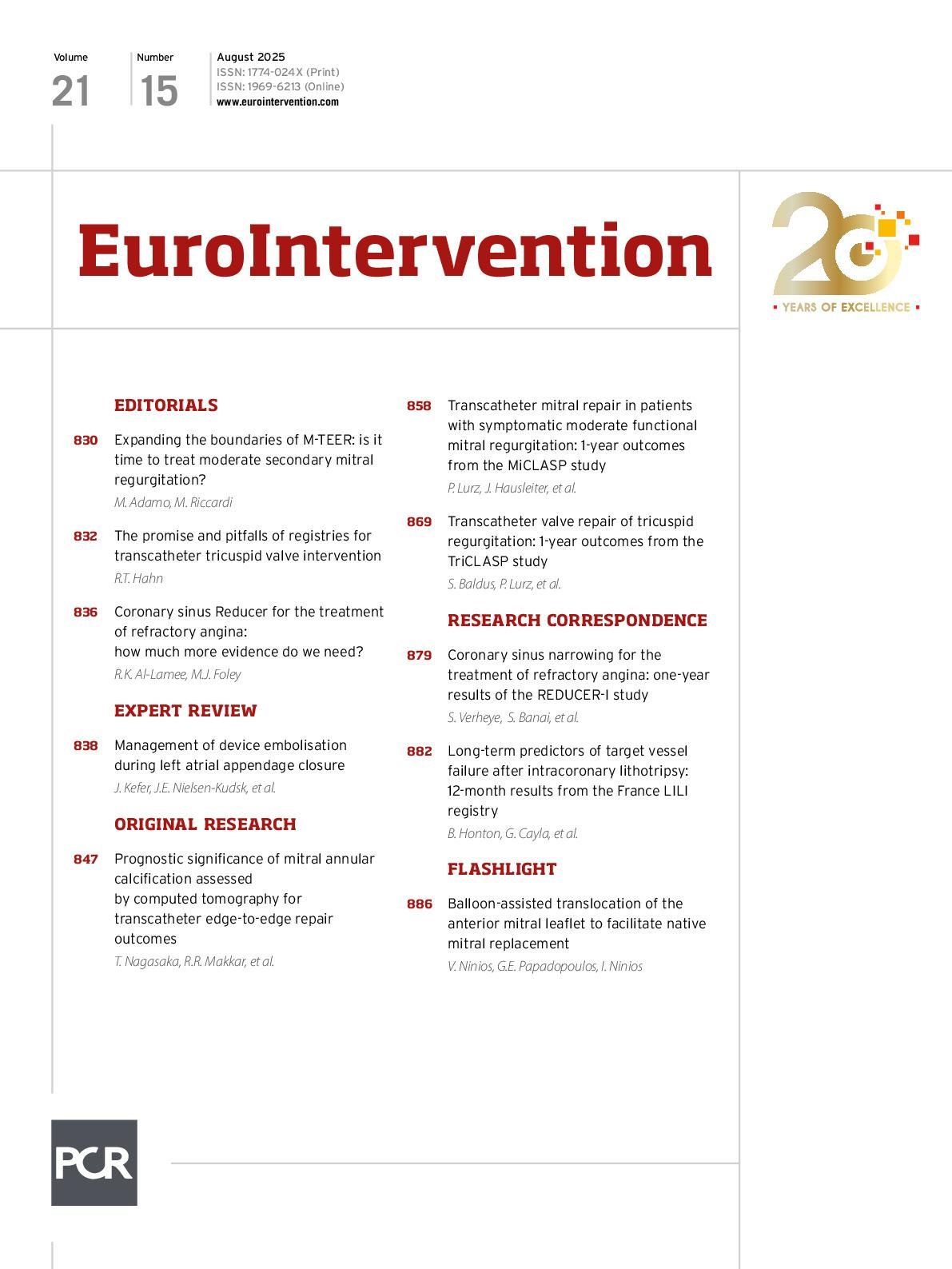A 77-year-old female with idiopathic pulmonary fibrosis and coronary artery disease presented with severe symptomatic heart failure (New York Heart Association Class IV). Echocardiography revealed severe mitral annular calcification (MAC) with reduced leaflet mobility, resulting in severe mitral stenosis (mean gradient 12 mmHg, peak gradient 23 mmHg) and mild mitral regurgitation (MR). Additional findings included moderate tricuspid regurgitation, severe pulmonary hypertension (systolic pulmonary arterial pressure of 80 mmHg), and a left ventricular ejection fraction of 45%. Cardiac computed tomography (CT) confirmed severe circumferential MAC (MAC score=9) and a porcelain aorta. Due to prohibitive surgical risk, the Heart Team opted for transfemoral transcatheter mitral valve replacement (TMVR).
The preprocedural planning CT (Figure 1A) predicted a neo-left ventricular outflow tract (neo-LVOT) area of 80 mm² for a 29 mm MyVal prosthesis (Meril Life Sciences). The anterior mitral leaflet (AML) measured 28 mm, and the interventricular septal thickness was 11 mm. These findings raised concerns about potential LVOT obstruction due to the long AML, prompting the decision to use the balloon-assisted translocation of the mitral anterior leaflet (BATMAN) technique, a within-leaflet transcatheter...
Sign up for free!
Join us for free and access thousands of articles from EuroIntervention, as well as presentations, videos, cases from PCRonline.com

